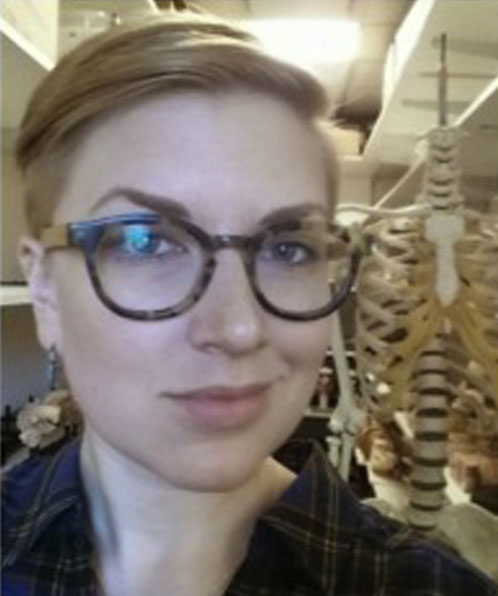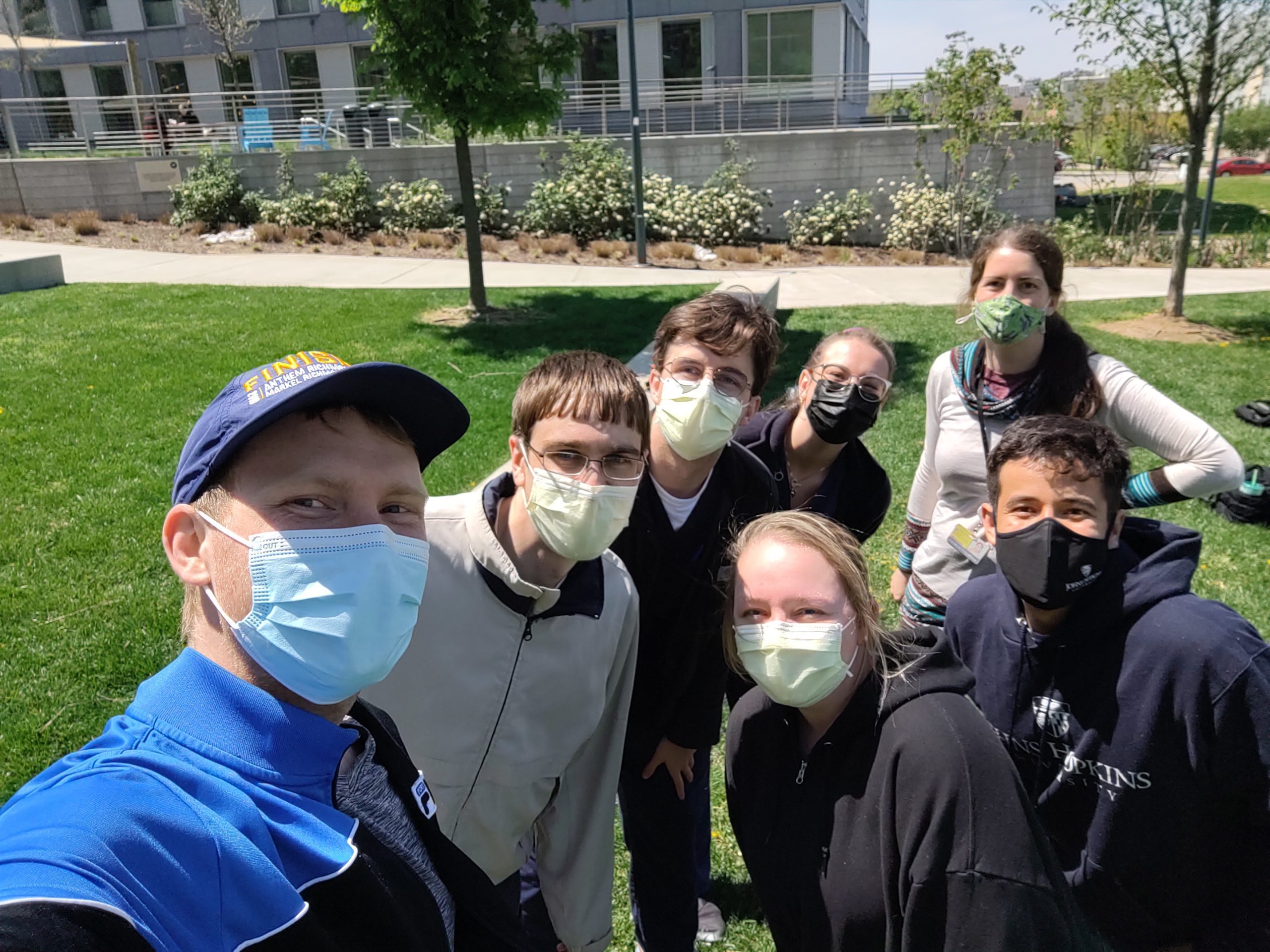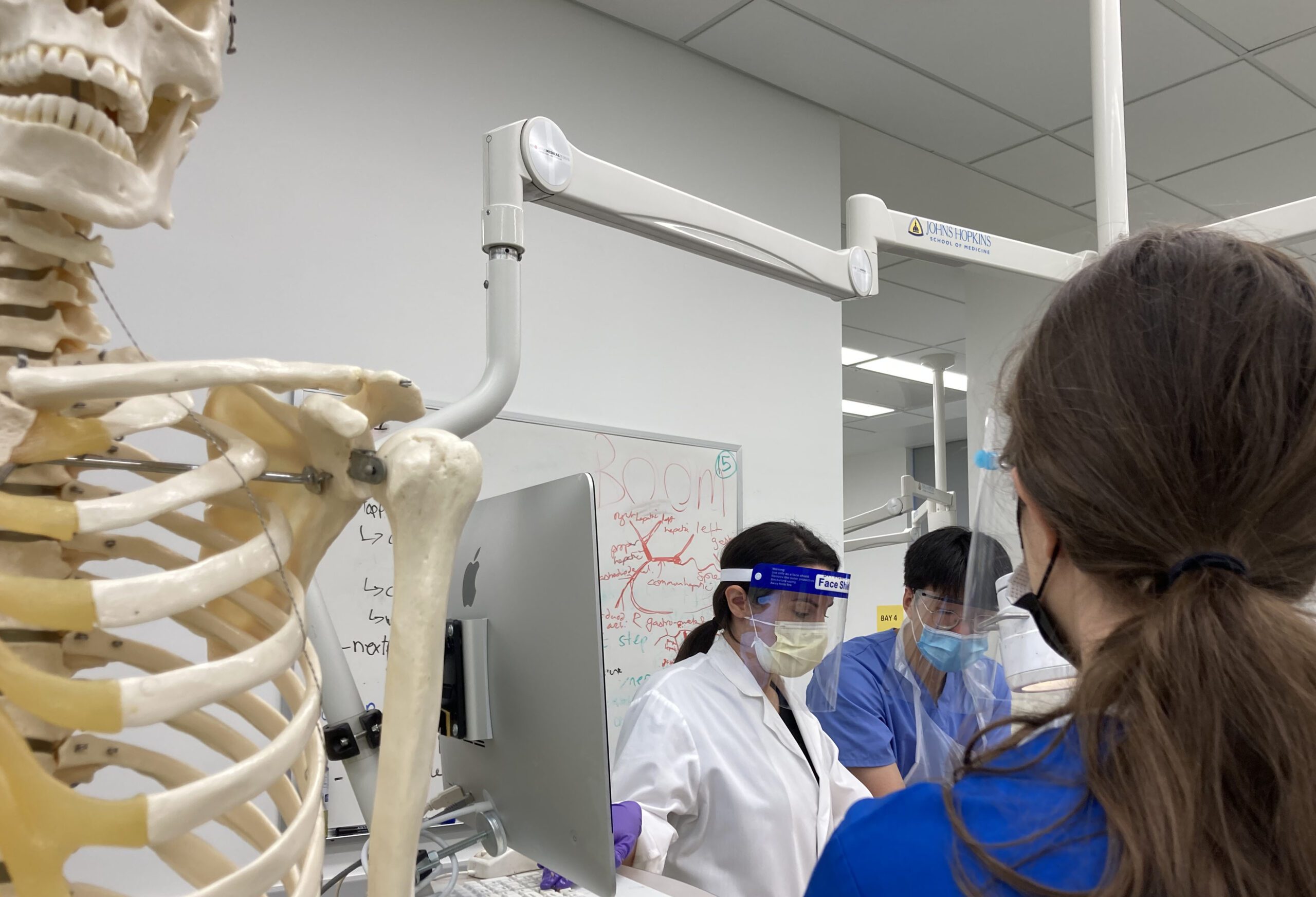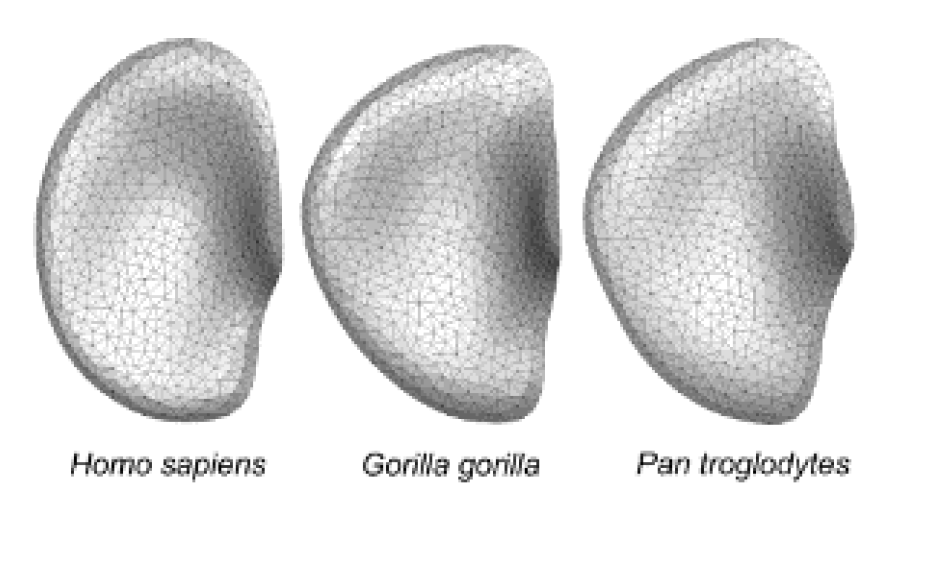Sylvester Lab

Research in the Sylvester Lab is focused in the areas of early hominin, human and primate locomotion; functional anatomy of the postcranial skeleton; statistical analysis of biological shape; and bone structure and microstructure
Most generally, Dr. Sylvester is interested in elucidating the factors that shape mammalian musculoskeletal morphology. His research focuses on understanding the way in which humans and non-human primates move through the environment with the goal of reconstructing the locomotor repertoire of extinct hominins and other primates. He finds this area of research compelling because the evolutionary success of terrestrial species is contingent upon their ability to obtain food, water, safety and potential mates – all of which depend on locomotion.
Dr. Sylvester’s approach is quantitative, involving the statistical analysis of three-dimensional biological shapes (geometric morphometrics), specifically musculoskeletal structures, and then linking the anatomy to function and function to locomotor behavior. He is also interested in expanding the current geometric morphometric toolbox to be more useful to functional morphologists, providing the means to extract functionally and biomechanically relevant information from relevant morphology.
Education
- Ph.D. Anthropology, The University of Tennessee, 2006
- M.A. Anthropology, The University of Tennessee, 2000
- B.S. Zoology, The University of Tennessee, 1996
Research Projects

Early hominin, human and primate locomotion
The goal of this work is to reconstruct the locomotor capabilities of early hominins to understand the selective pressures that causes hominin bipedalism to evolve.

Functional anatomy of the postcranial skeleton
The goal of this work is to elucidate the principals that link skeletal variation and locomotor performance.

Statistical analysis of biological shape
A keen interest in the lab is to explore new ways to quantify shape variation of biological structures.

Bone structure and microstructure
Bone is a dynamic tissue. In this work, we explore the relationship between bone microstructure and mechanical loading as well as develop tools for quantifying bone structural variation.
Selected Publications
Harper CM*, Goldstein D*, Sylvester AD. (2022) Comparing and combining sliding semilandmarks and weighted spherical harmonics for shape analysis. Journal of Anatomy.
Sylvester AD, Lautzenheiser SG, Kramer PA. (2021) A review of musculoskeletal modelling of human locomotion. Journal of the Royal Society Interface Focus 11 (5)
Sylvester AD, Lautzenheiser SG, Kramer PA. (2021) Muscle forces and the demands of human walking. Biology Open 10 (7):
Terhune CE, Sylvester AD, Scott JE, Ravosa MJ. (2020) Internal architecture of the mandibular condyle of rabbits is related to dietary resistance during growth. Journal of Experimental Biology 223 (7).
Sylvester AD, Kramer PA. (2018) Young’s modulus and load complexity: Modeling their effects on proximal femur strain. The Anatomical Record 301: 1189-1202.
Sylvester, A.D. and Terhune, C.E. (2017). Trabecular mapping: Leveraging geometric morphometrics for analyses of trabecular structure. American Journal of Physical Anthropology DOI: 10.1002/ajpa.23231.
Auerbach, B.M., Gooding, A.F., Shaw, C.N., and Sylvester, A.D. (2017). The relative position of the human fibula to the tibia influences cross‐sectional properties of the tibia. American Journal of Physical Anthropology DOI: 10.1002/ajpa.23196.
Reeves, N.M., Auerbach, B.M., and Sylvester, A.D. (2016) Fluctuating and directional asymmetry in the long bones of captive cottin-top tamarins (Saguinus oedipus). American Journal of Physical Anthropology 160:41-51. DOI: 10.1002/ajpa.22942
Sylvester, A.D. (2015) Femoral condyle curvature is correlated with knee walking kinematics in ungulates. The Anatomical Record 298:2039-2050. DOI: 10.1002/ar.23274
Sylvester, A.D. (2013) A geometric morphometric analysis of the hominid medial tibial condyle. The Anatomical Record 296:1518-1525. DOI: 10.1002/ar.22762
Kramer, P.A., Sylvester, A.D. (2013) Humans, geometric similarity, and the Froude number: Is “reasonably close” really close enough? Biology Open 2: 111-120. DOI: 10.1242/bio.20122691
Sylvester, A.D., Pfisterer, T. (2012) Quantifying lateral femoral condyle ellipticalness in chimpanzees, gorillas, and humans. American Journal of Physical Anthropology 149:458-467. DOI: 10.1002/ajpa.22144
Auerbach, B.M., Sylvester, A.D. (2011) Allometry and Apparent Paradoxes in Human Limb Proportions: Implications for Scaling Factors. American Journal of Physical Anthropology 144: 382-391. DOI: 10.1002/ajpa.21418
Sylvester, A.D., Kramer, P.A., Jungers, W.L. (2008) Humans are not (quite) isometric. American Journal of Physical Anthropology 137: 371-383. DOI: 10.1002/ajpa.20880
Sylvester, A.D., Merkl, B.C., Mahfouz, M.R. (2008) Assessing A.L. 288-1 femur length using computer-aided three-dimensional reconstruction. Journal of Human Evolution 55: 665-671. DOI: 10.1016/j.jhevol.2008.05.019
Sylvester, A.D. (2006) Locomotor decoupling and the origin of hominin bipedalism. Journal of Theoretical Biology 242(3): 581-590. DOI: 10.1016/j.jtbi.2006.04.016
People

C. Kinley Russell
PhD Graduate Student
- Postcranial functional anatomy
- Hominin evolution
- Bipedalism and locomotion
- Science and education

Kailie Batsche
PhD Graduate Student
- hominin paleontology
- functional morphology and mobility
- key shifts in the paleoenvironment pertaining to human origins
- primate locomotion
- evolution of vertebrate bipedalism
Courses Taught

ME.130.753
Fundamentals of Anatomy
This summer course introduces students in the Nurse Anesthetist Doctor of Nursing Practice program to human anatomy using a regional approach. The course is broken into 3 parts – (1) thorax, abdomen, pelvis (2) limbs and back, and (3) head and neck. Within each part, information is presented on the relevant regional topics via: readings and lectures; student observation of prosections in lab; student collaboration to complete model- and computer-based activities.

ME: 130.600
SFM Human Gross Anatomy
This seven-week Human Anatomy course is taught to first year medical students in the Johns Hopkins University School of Medicine. Designed to provide a comprehensive regional approach to the human body, this course includes lecture, cadaver dissection with emphasis on the three-dimensional relationships of anatomic structures, clinical correlations, medical imaging sessions, and team-based learning small group activities.

ME:130.742
Geometric Morphometrics
This course provides the foundations of geometric morphometrics which is the statistical analysis of biological shape. The course will cover theoretical underpinnings, background mathematics, as well as applied methodologies. Topics will include collection of landmark data, superimposition methods, statistical analyses and methods for visualizing shape variation.

AS.020.375
Human Anatomy (Homewood Undergraduate)
This course is an introduction to human gross anatomy, covering all areas of the human body in sufficient detail to create a vocabulary and foundation of knowledge for further study. We take a regional approach to learning the structure and function of human anatomy at the organ level and cover the body in three separate units: 1) Thorax, Abdomen, Pelvis & Perineum (TAPP); 2) Limbs; and 3) Head & Neck.
News
Dr. Sylvester Promoted to Associate Professor
News from Functional Anatomy & Evolution Read our latest announcements about department updates, honors and publications. Adam Sylvester was promoted to Associate Professor of Functional Anatomy and Evolution, effective October 1, 2020. A full time faculty...
Congratulations to Christine Harper on a successful dissertation defense
News from Functional Anatomy & Evolution Read our latest announcements about department updates, honors and publications. Christine Harper has defended her dissertation, “External Morphological Variation of Extant and Fossil Hominid Calcanei”....
